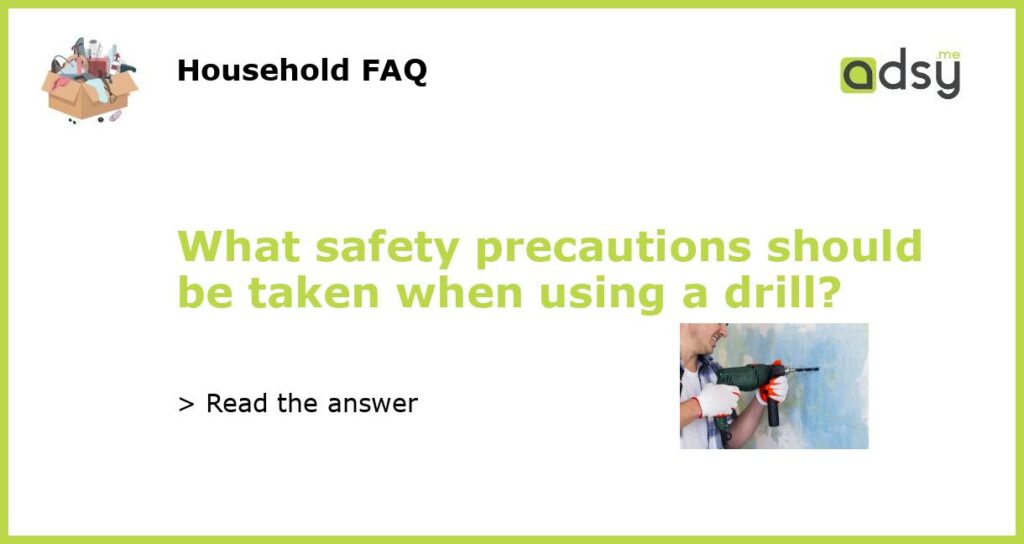Importance of Safety Precautions When Using a Drill
Using a drill can be an efficient way to complete various tasks, such as drilling holes or driving screws. However, it is crucial to prioritize safety when using a drill to prevent accidents and injuries. By following a few important safety precautions, you can ensure that you and those around you are protected from potential hazards.
Wear Appropriate Safety Gear
One of the most important safety precautions when using a drill is to wear appropriate safety gear. This includes wearing protective eyewear to shield your eyes from flying debris or dust particles. Additionally, wearing gloves can provide a better grip on the drill, reducing the risk of slipping or losing control during operation. Lastly, consider wearing ear protection if you will be using the drill for an extended period as the noise can be damaging to your hearing.
Inspect the Drill and Workspace
Prior to using a drill, it is crucial to inspect both the drill itself and the workspace. Check the drill for any visible damage or defects, such as a frayed cord or cracked housing. If any issues are found, do not use the drill and have it serviced or repaired before proceeding. Additionally, inspect the workspace to ensure it is clean and free from clutter or obstacles that could cause accidents or interfere with the drilling process.
Use the Drill Properly
Proper usage of the drill is essential for safety. Start by selecting the appropriate drill bit or driver for the task at hand. Ensure that the drill bit or driver is securely fastened into the chuck of the drill to prevent it from coming loose during operation. When using the drill, maintain a firm grip on the handle and position your hands away from the rotating parts. Avoid wearing loose clothing or jewelry that could become entangled in the drill.
Be Mindful of Electrical Hazards
If you are using a corded drill, it is essential to be mindful of electrical hazards. Ensure that the drill is unplugged when not in use or when changing drill bits. Additionally, always make sure the drill is connected to a grounded outlet or extension cord. Avoid using the drill in wet or damp conditions to prevent the risk of electrical shock. If you need to use a drill outdoors, make sure to use an appropriate outdoor extension cord that is designed for outdoor use and can handle the power requirements of the drill.






